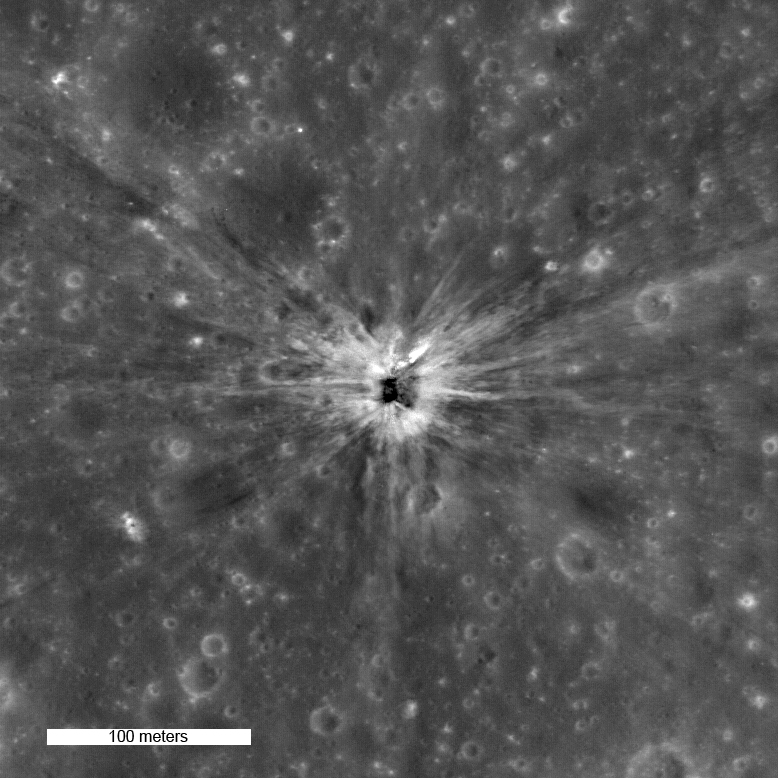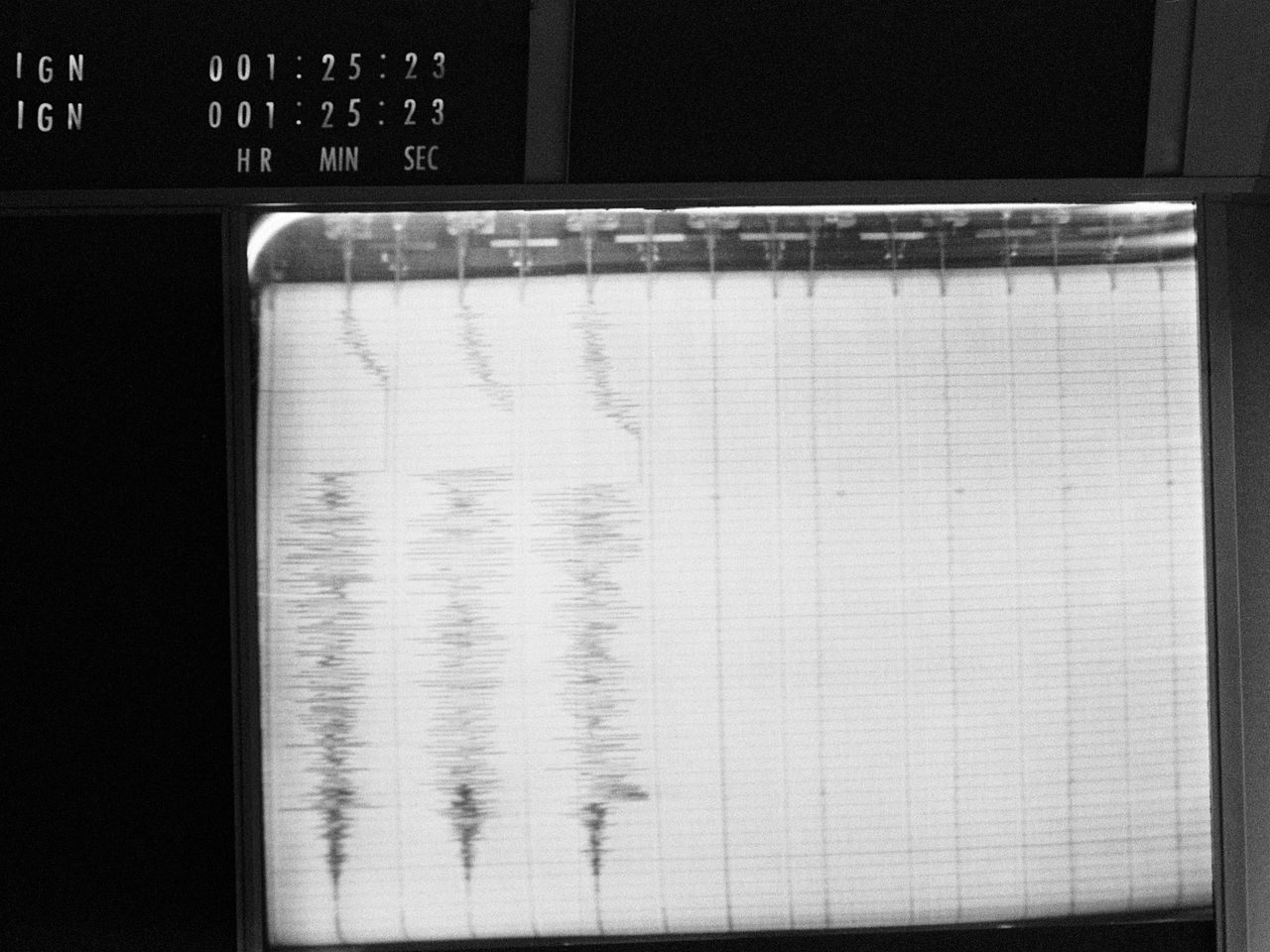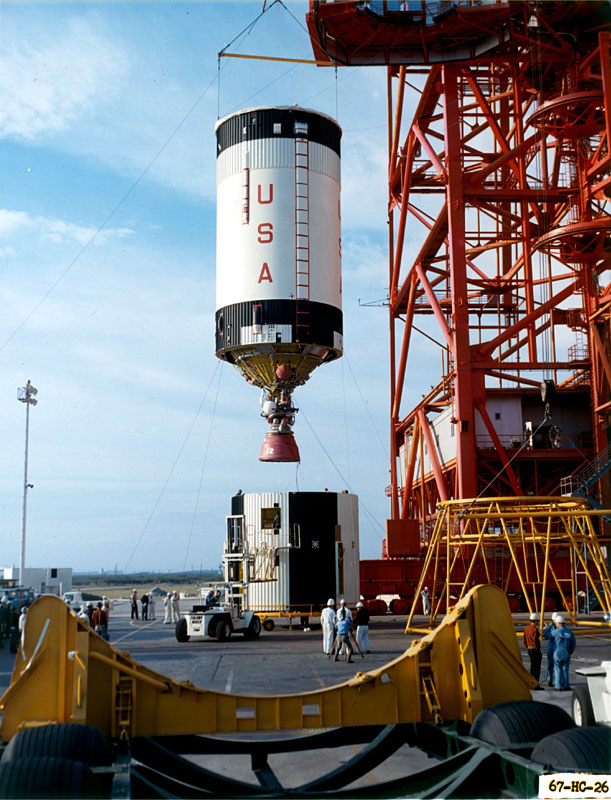
15 April 1970, 01:09:40 UTC: T plus 077:56:40.0: The Apollo 13 Saturn S-IVB-508 third stage impacted the surface of The Moon north of Mare Cognitum. (S. 2° 33′ 00″, W. 27° 52′ 48″). The S-IVB hit the lunar surface at a velocity of 2.58 kilometers per second (5,771 miles per hour). The impact energy was 4.63 x 1017 ergs (1.04 kiloton).
The impact was detected by seismometers placed on the Moon by Apollo 12 astronauts Pete Conrad and Alan Bean. This was part of the Apollo Lunar Surface Experiments Package, or ALSEP.

The Apollo 12 seismometer was located 135 kilometers (83.9 miles) from the Apollo 13 third stage impact. The signals were used to calibrate the instrument package, which was in service from 1969 to 1977.
The Saturn V third stage was designated Saturn S-IVB. It was built by Douglas Aircraft Company at Huntington Beach, California. The S-IVB was 58 feet, 7 inches (17.86 meters) tall with a diameter of 21 feet, 8 inches (6.604 meters). It had a dry weight of 23,000 pounds (10,000 kilograms) and fully fueled weighed 262,000 pounds (118,841 kilograms). The third stage had one Rocketdyne J-2 engine which used liquid hydrogen and liquid oxygen for propellant. Itproduced 232,250 pounds of thrust (1,033.10 kilonewtons). The S-IVB would place the Command and Service Module into Low Earth Orbit, then, when all was ready, the J-2 would be restarted for the Trans Lunar Injection.

© 2017, Bryan R. Swopes